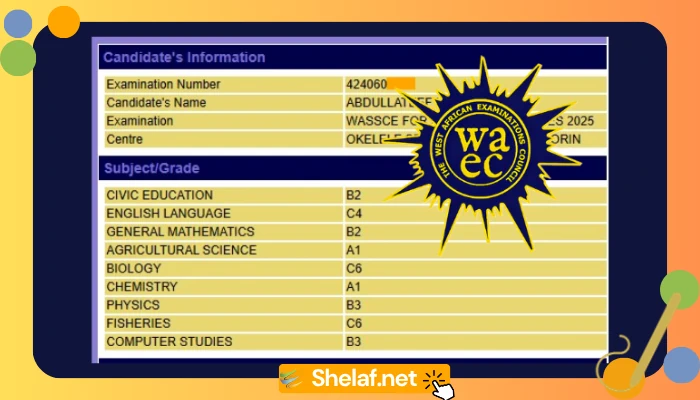With search engines prioritizing more and more structure, relevance, and ease of use, marketers not only have to rethink how content is created but also how it’s presented to the world. While Content Management Systems (CMS) have been giving plug-ins and other built-in SEO tactics for ages, the emergence of a headless CMS architecture provides some newer, stronger options to create better search visibility. From the ability to create content models for true structuring to clean URL generation, boosted page load times, and more, the architectural necessity of headless CMS empowers organizations to create quality, SEO-centric experiences across any front-end interface.
Contents
Semantic Structure and Rich Snippet Opportunities
Possibly the biggest advantage of SEO associated with a headless CMS is how it can facilitate a semantic structure of content. A typical CMS only provides content within predetermined page templates. A headless CMS allows marketers to establish definitions for reusable content types and fields. We’re talking titles and meta descriptions, H1s, images, product specifications, etc. When fields are established ahead of time, developers can map these types of fields to semantic HTML elements and schema markup. Storyblok for developers enhances this workflow by offering flexible content modeling and clean API delivery, making it easy to implement structured data and optimize for search engine visibility. When search engines see properly structured content, they’re better able to categorize, index, and understand the relevance of different pieces of information, which can lead to improved rankings and access to rich snippets and knowledge panels.
Better Site Speed and Performance
One of the biggest considerations Google has when determining a site’s ranking is site speed. Therefore having a headless CMS helps here because it’s designed for performance-first development on the front end. Since content is served through an API, developers can use static site generation (SSG) or server-side rendering (SSR) two options that help create faster loading pages. A traditional CMS may rely heavily on server-rendering and server-heavy templating which involves much more back-and-forth just to get someone one page. With the reliance on somewhat-default templates, a headless architecture frees teams up to focus more on performance without compromising content. The faster a page loads, the better for SEO and user experience, leading to reduced bounce rates.
Custom URL Structures and Routing
Custom URLs are good for SEO since they enhance usability and crawlability. Many headless CMS options allow for custom routing logic meaning development teams have complete control over defining clean URLs that are relevant to specific content. This means the URL structure does not rely heavily on categorization based on a traditional CMS template. Instead, developers can programmatically assign URLs as they fit based on category, hierarchy or taxonomy, providing consistency across the site. This makes it easier to adhere to your URL strategy, establish canonical tags, and create redirects when necessary all of which support positive SEO efforts.
Better Control Over Metadata for All Content Types
Metadata is one of the most crucial aspects of on-page SEO. A headless CMS allows for metadata fields page titles, meta descriptions, OG tags, alt text to be built into the content model directly. This way, editors can input relevant information for SEO at the time of creation so that every page or asset is adequately set up before launch. This common metadata can be injected into the front end dynamically, with full accessibility and control over how every page is shown in search and social sharing.
Easier to Apply Structured Data from the Beginning
Structured data and schema markup give search engines more information about your content, boosting rankings for relevant keywords. A headless CMS makes it easier to build and structure structured data as fields map to content types. For example, if an article is a product or FAQ, article fields can be connected to either of those schema types. Then, a developer can dynamically inject JSON-LD or microdata into the front end. This not only fosters more precise indexing but boosts opportunities to earn rich snippets, knowledge panels, and other SERP features.
Better Management of Multilingual SEO Efforts and Global Indexing
For brands with an eye on global expansion efforts, multilingual SEO becomes as much a marketing concern as it is a technical requirement. Therefore, a headless CMS is the ideal solution for flexibility and scalability. A headless CMS lends itself to multilingual efforts in content creation, localization, and region-specific optimization without its own static content structure. For example, where traditional CMS systems require brands to either duplicate content on different domains or sub-sites or create different iterations on the same site, a headless solution allows brands to keep different variations under the same schema. Thus, global teams can access and create similar but unique pieces of content without sacrificing brand consistency across regions and languages.
This also allows for multilingual best practices to be implemented from an API-level, Specifically, editors can add hreflang tags in the directly needed locations so that Google and other search engines recognize content as relevant to a specific audience. This makes it easier to avoid duplicate content issues when there’s a translated variation. Furthermore, metadata inclusive of keywords, title tags, descriptions, and alt attributes, can be linked to each language version, rendering all kinds of better search ranking results in different languages.
Enhanced Content Governance and SEO Compliance
SEO requires accurate, consistent, and timely content. A headless CMS promotes better content governance through approval workflows, versioning, and a more content-focused rule set. For instance, teams can establish SEO requirements directly within the content model, mandate character limits for titles and descriptions, and ensure that metadata fields are not left blank. Such systems prevent rudimentary SEO failures like duplicate titles or missing descriptions and ensure the content is finished behind the scenes before publishing.
Easy Integration with SEO Tracking and Analytics Software
SEO will not be effective without strategic oversight to tweak it based on performance. A headless CMS integrates with all major tracking and analytics software that assesses SEO effectiveness, including Google Search Console, Screaming Frog, or SEMrush. Marketers can assess keyword performance, rankings, and crawl issues based on certain inputs created within the structured CMS. Instead of assessing data in one application then using a separate spreadsheet to assess findings elsewhere, teams have an insight into how their content performs in search related to its CMS fields and entry easy to edit.
Easier to Scale Content Strategies Across All Channels
When content is published everywhere from websites to apps to social media and aggregators the potential for disparate SEO increases. A headless CMS enables brands to keep all content in one place and use APIs to send it anywhere and any format it needs to exist. This ensures that all SEO activities performed metadata, alt text, structured fields travel with the content no matter where it goes. The more consistent the optimization, the more authoritative the content appears, bolstering link equity and presence in SERPs.
Creating a Content Foundation for Voice and Visual Search
A headless CMS is perfect for the brand wanting to get ahead of search trends because with voice and visual search making its mark on how people find and interact with information, content must be more structured, semantic and ultimately flexible. What once was expected of content delivery by way of templated static structures and hardcoded front-ends will not longer apply when someone can ask for something and have it delivered to them instantly via a voice-assisted response or when a user takes a picture of something and their phone camera identifies it. A headless CMS allows brands to address this level of search from the get-go and from behind-the-scenes.
A headless CMS stores content in a granular, machine-readable manner, meaning that rendering content is decoupled from displaying it. Therefore, the more adaptable and malleable content is to be reconfigured, the more likely it will be to arrive in the right format for a new type of search. For example, voice interfaces rely on structured data to respond accurately to users. If brands use the right schema (Product, FAQ, How-To, LocalBusiness, etc.) within their markup, the data is more indexable and usable by Google and voice assistants like Alexa and Siri.
In addition, with API-driven delivery, it’s not only rendered according to expectations across platforms, but it’s also fast enough to meet user needs. Speed matters for ranking; the requirements for webpage performance are required across the board for voice search results just as they would for traditional, text-based searches. This means that if someone scans a barcode to find a retail location or asks a voice assistant where they can get help, a headless CMS ensures that the answer delivered is properly structured and contextualized by the user experience.
This will also bring new types of discovery to marketers beyond traditional SEO. For example, voice results can yield featured snippets while visual searches can lead to shoppable pins on Instagram or Pinterest. All of these integrations create brand awareness while supporting discoverability. The future of search relies increasingly on context and intent so the best way for an organization to get ahead is to ensure their content is structured, semantically supported, and can be integrated into any universe.
Conclusion
Companies prioritizing SEO within a content-heavy, multi-channel marketplace gain meaningful advantages through headless CMS architecture. As search engines become more sophisticated and as users increasingly expect faster, personalized, and accessible experiences, typical content management solutions leave enterprise expectations unmet. Headless CMS platforms, however, are designed with a back end that delivers on front-end SEO requirements for controlled rendering of content, load times, and an ability to integrate with third-party tracking easily.
Since a headless CMS disassociates the content layer from presentation, developers can build performance-based front ends with CI-driven tools (think Gatsby, Next.js, or Nuxt.js) while rendering data through APIs. This disparate-yet-cohesive architecture fosters the load speeds and mobile-friendliness that impact search engine placement while enabling marketers to dictate metadata, schema, and content formulation strategically. These technicalities lead to increased crawlability, where SE bots have better access to rendered back ends leading to more refined indexing and opportunities to engage with rich results like featured snippets and knowledge panels.
Enterprise-level expectations and digital globalization facilitate easier SEO endeavors with a unified headless CMS. While applications can be dispersed across channels, websites, apps, IoT devices a headless CMS provides a single source of truth where everything can always be updated and SEO-friendly wherever it manifests. International brands with location-based regional and local sites can focus on a headless CMS to ensure time-sensitive SEO changes are enacted with central control, while any SEO content with location-based variations will support localized versions without impacting the master copy.
In addition, a headless CMS is flexible, enabling experimentation and real-time edits without overburdening technical resources. Structure often confines what an organization can or cannot do to its advantage, but a headless CMS empowers marketers with version control and modular components to make fast edits turning duplicate pages into canonicals or leveraging localized landing pages for National Water Month thousands of times but it has to be done quickly or else strategies fail with DE warrants when inaction persists.
If an organization is international, globally reaching or needs regionally based sites for various locations, the headless approach to reactive/performance SEO content is critical. For brands needing various sites or an extended content reach, it’s critical to align where and how content is delivered to what’s received by the public; headless keeps your content visible enough to rank versus being merely found. Therefore, organizations ready to elevate their games should take a notion of relative, data-driven and performance-focused strategies to market for a more organized delivery sooner rather than later. This isn’t merely a technical upgrade; this is a technological advancement toward better SEO smarter, faster and more efficient.











